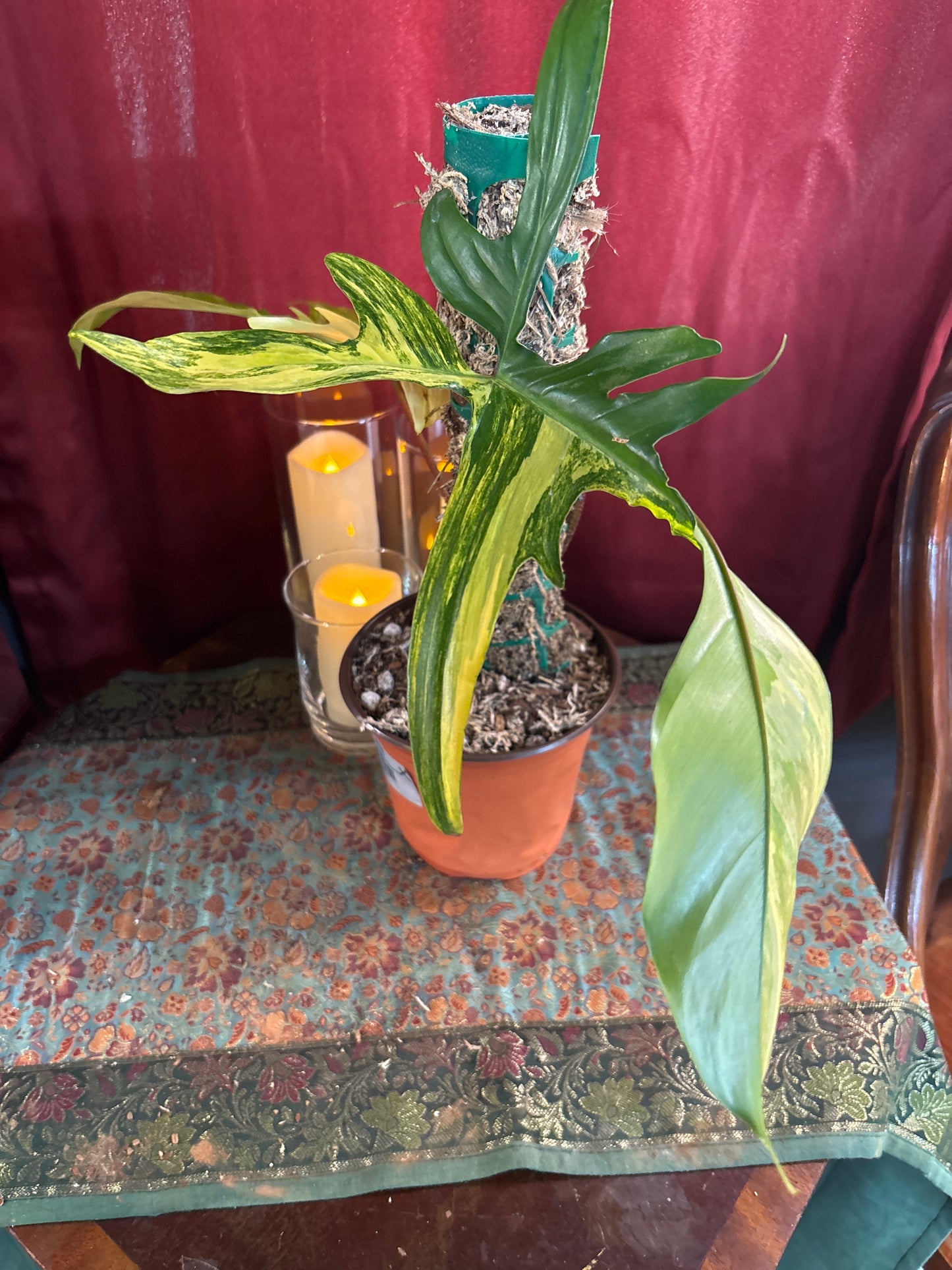Curio Plants
Florida Beauty Variegated Philodendron
Florida Beauty Variegated Philodendron
Couldn't load pickup availability
Temps below 50 deg add Winter Protection!
Philodendron 'Florida Beauty': A Collector's Gem
Introduction:
The Philodendron 'Florida Beauty' is a breathtaking hybrid philodendron known for its strikingly variegated leaves that are a blend of dark green, light green, and creamy white. The plant’s lobed leaves have a distinct elongated form, creating an elegant and dramatic display. This variegated beauty is highly valued among collectors for its unique foliage and relatively easy care.
History:
The Philodendron 'Florida Beauty' is believed to be a hybrid of the Philodendron squamiferum and Philodendron pedatum, two species known for their interesting leaf shapes and climbing habits. The 'Florida Beauty' variety gained popularity due to its exceptional variegation and attractive appearance. Although it is not naturally occurring in the wild, it has become a highly sought-after cultivar in plant markets around the world.
Care Outline:
- Light: Philodendron 'Florida Beauty' thrives in bright, indirect light, which helps maintain its vivid variegation. It can tolerate lower light conditions, but the variegation may become less pronounced. Aim for 10,000 to 20,000 lux for the best growth.
- Water: Water the plant when the top 1–2 inches (2.5–5 cm) of soil are dry. Keep the soil evenly moist, but avoid letting it sit in water, as overwatering can lead to root rot. Ensure the pot has good drainage.
- Humidity: This plant thrives in high humidity, ideally between 60% and 80%. You can mist the plant regularly or place it near a humidifier, especially in drier indoor environments.
- Temperature: It prefers warm temperatures between 65°F and 80°F (18°C to 27°C). Avoid exposing the plant to temperatures below 55°F (13°C) or cold drafts, which can damage its delicate leaves.
- Soil: Use a well-draining, nutrient-rich soil mix. A good mix for this plant includes orchid bark, peat moss, perlite, and a small amount of coco coir to help retain moisture while allowing good airflow around the roots.
- Fertilizer: Feed the plant once a month during the growing season (spring and summer) with a balanced, water-soluble fertilizer (such as 10-10-10). Reduce feeding in the fall and winter when growth slows.
- Propagation: The best way to propagate Philodendron 'Florida Beauty' is through stem cuttings, making sure to include at least one node. This method ensures that the new plant will carry the same beautiful variegation.
Light and Lux Rating:
To maintain its stunning variegation, the Philodendron 'Florida Beauty' requires bright, indirect light with a lux rating of 10,000 to 20,000 lux. Direct sunlight can burn the leaves, particularly the variegated areas, so it’s best to place it in filtered light or behind a sheer curtain.
- Natural Light: Place the plant near an east-facing or north-facing window where it will receive bright, indirect sunlight throughout the day.
- Artificial Light: If using grow lights, make sure the plant receives 12–16 hours of light daily with the lux rating within the recommended range.
Propagation:
1. Stem Cuttings:
- Best Time: Spring or early summer during the active growing season.
-
Steps:
- Take a healthy stem cutting with at least one node and a few leaves.
- Allow the cutting to dry for a few hours to prevent rot.
- Place the cutting in water or directly into a well-draining soil mix, ensuring the node is buried.
- Keep the soil lightly moist and maintain high humidity until roots develop.
2. Air Layering:
- Another method is air layering, which encourages root development while the cutting is still attached to the mother plant.
- Wrap a section of the stem with moist sphagnum moss, secure it with plastic wrap, and once roots develop, you can cut the new plant from the mother and pot it separately.
Soil for Philodendron 'Florida Beauty':
This plant thrives in a well-draining, airy mix that mimics its natural epiphytic conditions. A good soil mix includes:
- Orchid bark for aeration and root support.
- Peat moss or coco coir for moisture retention.
- Perlite for drainage. This soil mix ensures the plant’s roots stay healthy and well-oxygenated while maintaining enough moisture.
Fertilizing:
- During the growing season (spring and summer), feed the plant monthly with a balanced fertilizer diluted to half strength.
- Avoid over-fertilizing, as it can lead to a buildup of salts in the soil, which can harm the roots and stunt growth.
- Reduce feeding during the fall and winter months when the plant’s growth slows.
Repotting:
- When to Repot: Repot the plant every 1–2 years, or when it becomes root-bound. Look for signs such as roots growing out of the drainage holes.
- Best Time: Early spring is the best time to repot, just before the active growing season begins.
-
Steps:
- Gently remove the plant from its pot and inspect the roots.
- Repot in a slightly larger pot with fresh, well-draining soil mix.
- Water thoroughly after repotting and place the plant in bright, indirect light.
Share










